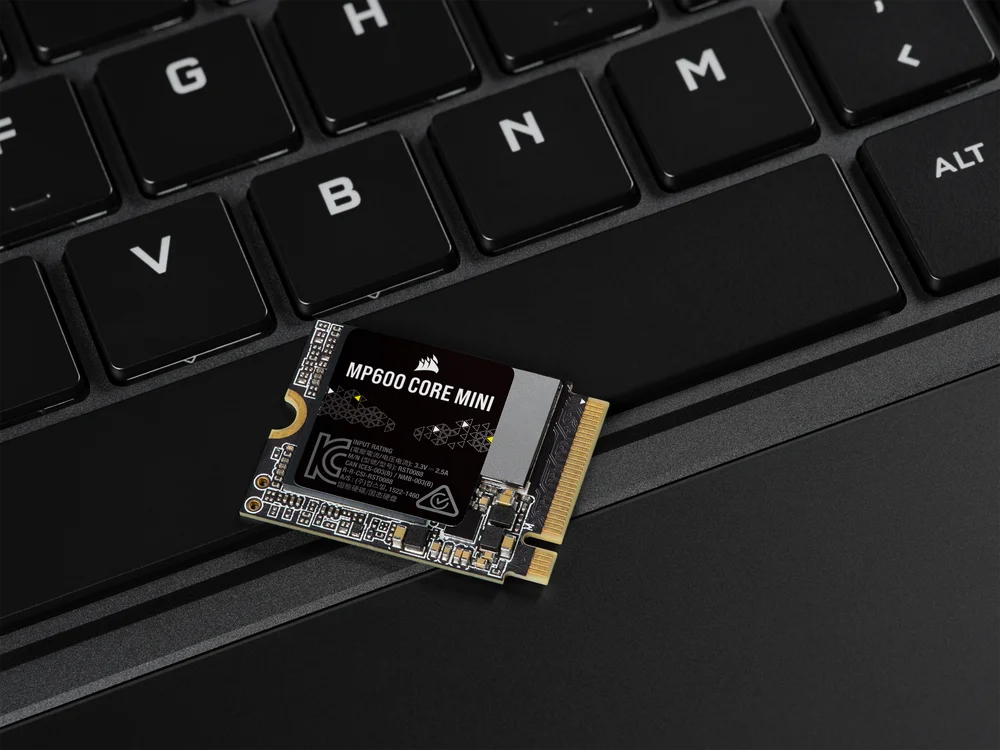Mastering M.2 SSD Formatting: A Comprehensive Guide for Optimal Performance
M.2 Solid State Drives (SSDs) have become the go-to storage solution for modern computers, offering unparalleled speed and efficiency compared to traditional hard disk drives (HDDs).1 Their compact form factor and impressive performance make them ideal for everything from gaming rigs to professional workstations. However, to harness their full potential, it’s crucial to understand how to properly format and manage them. This comprehensive guide will walk you through the process of formatting an M.2 SSD, covering essential steps, best practices, and troubleshooting tips for both Windows and macOS environments.
Why Format an M.2 SSD?
Formatting an M.2 SSD, whether it’s a brand new drive or one you’re repurposing, is a fundamental step that serves several important purposes:
- Initialization: For a new SSD, formatting is the initial step to make it recognizable and usable by your operating system. Without it, the drive will appear as “unallocated space.”2
- File System Creation: Formatting establishes a file system (e.g., NTFS for Windows, APFS for macOS), which dictates how data is organized, stored, and retrieved on the drive.3 Choosing the correct file system ensures compatibility and optimal performance for your specific operating system.
- Data Erasure: When formatting a used SSD, the process essentially wipes all existing data, preparing it for a fresh start.4 This is critical for privacy and security, especially if you’re selling or giving away the drive.
- Performance Optimization: A clean format can resolve issues caused by corrupted files, bad sectors, or fragmented data, leading to improved read/write speeds and overall drive stability.
- Partitioning: Formatting allows you to create one or more partitions on your SSD, logically dividing the drive into separate sections. This can be useful for organizing data, installing multiple operating systems, or creating dedicated recovery partitions.5
Pre-Formatting Essentials: Crucial Steps Before You Begin
Before you dive into the formatting process, there are a few vital considerations to ensure a smooth and successful experience:
- Back Up Your Data: This is arguably the most critical step. Formatting an M.2 SSD will erase all data on it.6 If you’re formatting a drive that contains important files, ensure you have a complete backup to another storage device (external hard drive, cloud storage, etc.). For new drives, this is typically not an issue.
- Identify the Correct Drive: If you have multiple drives installed, carefully identify the M.2 SSD you intend to format. Formatting the wrong drive can lead to irreversible data loss.7 Use Disk Management (Windows) or Disk Utility (macOS) to confirm the drive’s capacity and characteristics.
- Check M.2 Compatibility: Ensure your motherboard has a compatible M.2 slot and that the M.2 SSD’s key type (B, M, or B+M) matches the slot. While physical installation precedes formatting, a compatible setup is foundational.
- Consider Your File System Needs:
- NTFS (New Technology File System): The standard for Windows, supporting large files and partitions.8 Ideal if your M.2 SSD will primarily be used with Windows.
- APFS (Apple File System): Apple’s default file system for macOS 10.13 and later, optimized for SSDs with features like encryption and snapshots.9 Best for Mac-only use.
- HFS+ (Hierarchical File System Plus): An older macOS file system, still compatible with older macOS versions (10.12 and earlier). Less optimized for SSDs than APFS.
- exFAT: A versatile file system compatible with both Windows and macOS. It supports large files (over 4GB) and is a good choice for drives that will be used across different operating systems.
- FAT32: An older file system with broad compatibility, but it has a significant limitation: individual files cannot exceed 4GB.10 Generally not recommended for modern M.2 SSDs.
- Quick Format vs. Full Format:
- Quick Format: This method is faster as it only removes the file system structure, making the drive appear empty without erasing the actual data. For SSDs, quick format is generally recommended as it causes less wear on the drive.
- Full Format: This method scans the drive for bad sectors and writes zeros to all data. While more thorough, it’s more time-consuming and can cause additional wear on an SSD, potentially shortening its lifespan.11 Avoid full format for SSDs unless absolutely necessary (e.g., suspected drive issues).
Formatting M.2 SSD in Windows
Windows provides built-in tools like Disk Management and Command Prompt (DiskPart) to format M.2 SSDs.12
Method 1: Using Disk Management (Recommended for Most Users)
Disk Management offers a user-friendly graphical interface for disk operations.13
- Open Disk Management:
- Right-click on the Windows Start button.
- Select “Disk Management” from the context menu.
- Initialize the M.2 SSD (for new drives): If your M.2 SSD is new and hasn’t been initialized, a pop-up window will appear asking you to initialize the disk.14
- Choose either MBR (Master Boot Record) or GPT (GUID Partition Table). For most modern systems and drives larger than 2TB, GPT is recommended.
- Click “OK.”
- Create a New Simple Volume:
- Locate your M.2 SSD, which will typically show as “Unallocated” space.
- Right-click on the “Unallocated” space and select “New Simple Volume.”
- Follow the New Simple Volume Wizard:
- Click “Next” on the Welcome screen.
- Specify Volume Size: By default, it will suggest the maximum available space for a single partition. You can adjust this if you want to create multiple partitions. Click “Next.”
- Assign Drive Letter: Choose an available drive letter (e.g., D:, E:). Click “Next.”
- Format Partition:
- File system: Select NTFS for Windows compatibility. If you need cross-platform compatibility, choose exFAT.
- Allocation unit size: Leave this at “Default.”
- Volume label: Give your drive a descriptive name (e.g., “M.2 SSD Games,” “Data Drive”).15
- Perform a quick format: Ensure this box is checked for SSDs.
- Enable file and folder compression (optional, typically leave unchecked for SSDs).16
- Click “Next,” then “Finish” to complete the process.
Your M.2 SSD should now appear as a formatted drive in “This PC” (or “My Computer”).
Method 2: Using Command Prompt (DiskPart) (For Advanced Users)
This method is useful for troubleshooting or when Disk Management isn’t accessible.
- Open Command Prompt as Administrator:
- Type “cmd” in the Windows search bar.
- Right-click17 on “Command Prompt” and select “Run as administrator.”
- Open DiskPart:
- Type
diskpartand press Enter.
- Type
- List Disks:
- Type
list diskand press Enter. Carefully identify your M.2 SSD by its size. Note its disk number (e.g., Disk 0, Disk 1).
- Type
- Select the Disk:
- Type
select disk X(replace X with your M.2 SSD’s disk number) and press Enter.
- Type
- Clean the Disk (Caution: This erases all data!):
- Type
cleanand press Enter. This command removes all partitioning and formatting information.
- Type
- Create a Primary Partition:
- Type
create partition primaryand press Enter.
- Type
- Format the Partition:
- Type
format fs=ntfs quick(orformat fs=exfat quickfor cross-platform) and press Enter. Thequickparameter is crucial for SSDs.
- Type
- Assign a Drive Letter:
- Type
assign letter=Y(replace Y with your desired drive letter) and press Enter.
- Type
- Exit DiskPart:
- Type
exitand press Enter.
- Type
- Exit Command Prompt:
- Type
exitand press Enter.
- Type
Formatting M.2 SSD in macOS
For Mac users, Disk Utility is the primary tool for managing and formatting storage devices.18
- Boot into macOS Recovery (for startup disk M.2 SSD):
- If your M.2 SSD is your startup disk, you’ll need to boot into macOS Recovery. Turn on your Mac and immediately press and hold
Command + R(for Intel-based Macs) or hold the Power button (for Apple silicon Macs) until you see the Apple logo or globe. - From the macOS Utilities window, select “Disk Utility” and click “Continue.”
- If your M.2 SSD is your startup disk, you’ll need to boot into macOS Recovery. Turn on your Mac and immediately press and hold
- Open Disk Utility (for non-startup disk M.2 SSD):
- If your M.2 SSD is an internal secondary drive or an external enclosure, open “Disk Utility” directly from
/Applications/Utilities.19
- If your M.2 SSD is an internal secondary drive or an external enclosure, open “Disk Utility” directly from
- Show All Devices:
- In Disk Utility, go to “View” in the menu bar and select “Show All Devices.” This ensures you see the physical M.2 SSD, not just its existing volumes.
- Select the M.2 SSD:
- In the sidebar, select the physical M.2 SSD (usually labeled with its capacity and model, not just a volume name).
- Erase the Drive:
- Click the “Erase” button in the toolbar.
- Configure Erase Options:
- Name: Give your drive a descriptive name.
- Format:
- For Mac-only use: Choose APFS (macOS 10.13 or later, optimized for SSDs) or Mac OS Extended (Journaled) (HFS+, for older macOS compatibility or HDDs).
- For cross-platform (Mac & Windows) use: Choose exFAT.
- Scheme: Select GUID Partition Map (GPT). This is the modern standard for Mac. Avoid Apple Partition Map (APM) for M.2 SSDs.
- Confirm and Erase:
- Click “Erase” to start the formatting process. A confirmation message will appear. Click “Erase” again.
- Once complete, click “Done.”
Best Practices for M.2 SSD Management
Beyond the formatting process, follow these best practices to maintain your M.2 SSD’s performance and longevity:
- Enable TRIM: TRIM is an essential feature for SSDs that helps maintain performance by20 allowing the operating system to inform the SSD which data blocks are no longer in use and can be wiped internally.21 Both Windows and macOS typically enable TRIM by default for SSDs, but you can verify it.22
- Avoid Filling to Capacity: Try to keep at least 10-15% of your SSD’s space free. SSDs perform best when they have free blocks for wear leveling and garbage collection.
- Regularly Update Firmware: SSD manufacturers often release firmware23 updates that can improve performance, fix bugs, and enhance compatibility.24 Check your SSD manufacturer’s website for the latest firmware.
- Don’t Defragment: Unlike HDDs, SSDs do not benefit from defragmentation. In fact, defragmenting an SSD can cause unnecessary write cycles and shorten its lifespan.25 Windows’ “Optimize Drives” utility handles SSDs differently than HDDs, performing TRIM operations instead of defragmentation.26
- Use SSD-Aware Tools: When partitioning or managing your SSD, stick to operating system’s built-in tools (Disk Management/Disk Utility) or reputable third-party partition managers that are designed to work with SSDs.
- Secure Erase for Sensitive Data: If you are selling or disposing of an M.2 SSD with sensitive data, a simple format may not be sufficient to prevent data recovery. Consider using the manufacturer’s secure erase utility or a professional data sanitization tool.
Troubleshooting Common M.2 SSD Formatting Issues
While the formatting process is generally straightforward, you might encounter some issues:
- M.2 SSD Not Showing Up:
- Check physical connection: Ensure the M.2 SSD is properly seated in its slot and secured.
- BIOS/UEFI settings: Verify that the M.2 slot is enabled in your system’s BIOS/UEFI settings and that the drive is detected.
- Drivers: For NVMe M.2 SSDs, ensure you have the necessary NVMe drivers installed (though Windows and macOS often have built-in support).
- “Format Option Greyed Out”: This usually means the disk is unallocated or uninitialized. Follow the steps to initialize the disk and create a new simple volume.
- “Cannot Format Drive”: This could be due to the drive being in use (e.g., if it’s your boot drive), having bad sectors, or a corrupted partition table. Try performing a
cleancommand via DiskPart (Windows) or erasing the entire device via Disk Utility (macOS) and then re-initializing/re-creating the partition. - Slow Formatting: If the formatting process is taking an unusually long time, ensure you’ve selected “Quick format” for SSDs. A “Full format” will be significantly slower.
Conclusion
Properly formatting your M.2 SSD is a crucial step to ensure it functions optimally within your system. By following the guidelines outlined in this article, you can efficiently prepare your drive for use, organize your data, and maintain peak performance. Remember to always back up your data before initiating any formatting process and to select the appropriate file system for your operating system and usage needs. With these best practices in mind, your M.2 SSD will provide fast, reliable storage for years to come.
External Links:
- Seagate’s M.2 NVMe SSD Installation Guide
- Apple Support: Erase and reformat a storage device in Disk Utility
- Crucial’s SSD Formatting Best Practices
- Optimizing Windows Performance for SSDs
- Understanding Different File Systems
- Guide to Building a Custom PC
for more amazing posts !


